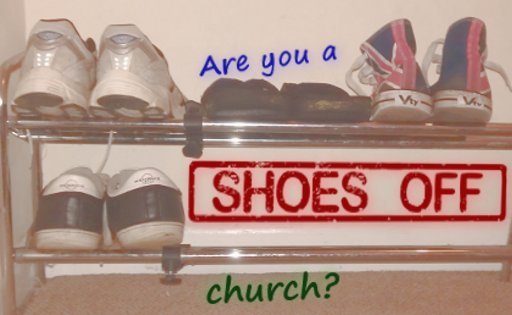Modern life seems to have turned into a dichotomy between being busy (generally, “too busy”) and being bored (or at best idle). An empty slot on the schedule needs to be filled, and everything needs to be timetabled.
That means, generally, that genuine interruptions are not welcome. I’m guilty of this: there are many times I have turned someone away, saying “I’m busy”. But there have also been a few times where I haven’t, and they have on occasion proved to be life-changing, both for me and for the person who was interrupting.

Illustration: Sir John Tenniel, in the public domain
Being interruptible is good – I am utterly convinced of that. But it’s not easy when you live in a culture of strivers and achievers. It’s not easy to stop seeking busyness; and that means it’s not easy to be interrupted. So here are 8 things you can do to become interruptible.
1. Build interruptibility into your entire day. Keeping specific hours clear for any interruptions is not sufficient: you don’t know in advance when you’re going to be interrupted. Otherwise, you could have scheduled it!
2. Don’t compensate for interruptions by working longer. If you do, all those little interruptions are going to nibble away at what you think you can do without. Prayer. Personal time. Family time. Entertainment. Ultimately, you’re going to hate all the interruptions because they mean losing out on what you enjoy. But in order to not have to compensate, you will have to anticipate that some tasks will take longer, or that you will need longer to recharge your batteries than you think. Ultimately, it might mean taking on less than what you could take on. Be happy with mediocrity: not because it’s good in itself, but because it allows you to welcome interruptions.
3. Be sensible about it. If you’re teaching, or leading a study, or in a meeting, the interruption is going to affect more people than you. In those cases where other people directly suffer from the interruption (and there’s no helping it), don’t allow interruptions. But if you’re planning a lesson, or writing a financial report, or a thesis, or carrying out any form of solitary work, you can finish that later – as long as you had planned extra time for it during the day/week.
4. Appear to be interruptible. There’s a massive difference between someone frenetically typing away at his computer, chain-drinking coffee, with headphones on; and someone who frequently moves and offers to make cups of tea for others, and engages in conversation. Keep your door open or ajar if you have your own office. If people think you’re never doing any work, or don’t know what that work entails even though they spend a significant amount of time with you, it’s working. It isn’t that pleasant when people joke about your apparent idleness, but it’s worth it.
5. Know when to cut the interruption short. There are at least two reasons to stop the person who’s interrupting you. One of them is inevitable work or personal commitments. The other is where you find you’re not helping the person who’s interrupting you: either you’ve been going in circles for a long time, or the issue requires your full attention and should really be scheduled. The issue with apparent idleness is that your interrupters think you have an infinite amount of time to offer them; so it becomes difficult to do stop the interruption graciously. The “I’m working” line gets dismissed, so I find I have to say it with a bit more anger than I would like to. If you have any pointers on that, please leave them in a comment.
6. Prioritise. Some people are more prone to interrupt you than others. It may be down to the seriousness of the issue, but it may also be that you’re going around in circles. Or the interrupter may be using your conversation as a way to avoid their own work, or for other secondary purposes, where there is no serious issue to be dealt with. Being interrupted for a friendly chat or a cup of tea is fine, but if it happens too often, others won’t be able to interrupt you when they need to.
7. Have backup plans for emergencies. There will be times when you won’t be able to deal with the interruption. It could be that you just don’t have the time, or that you find it too emotionally straining. Have a network of people who are ready to take over from you.
8. Don’t use interruptions as an excuse. Don’t seek out interruptions as a way to avoid doing the work you’re meant to be doing and still feel good about yourself.



